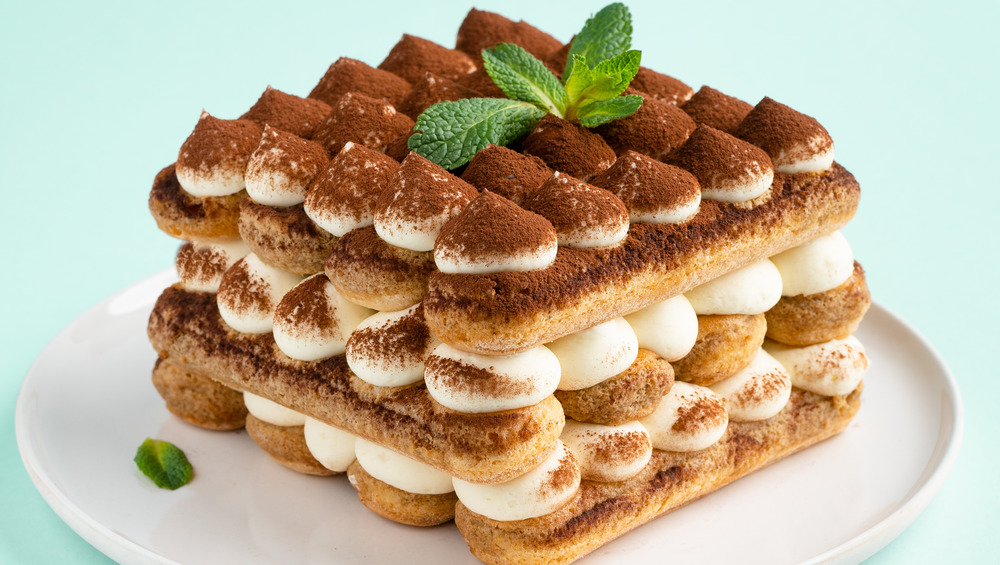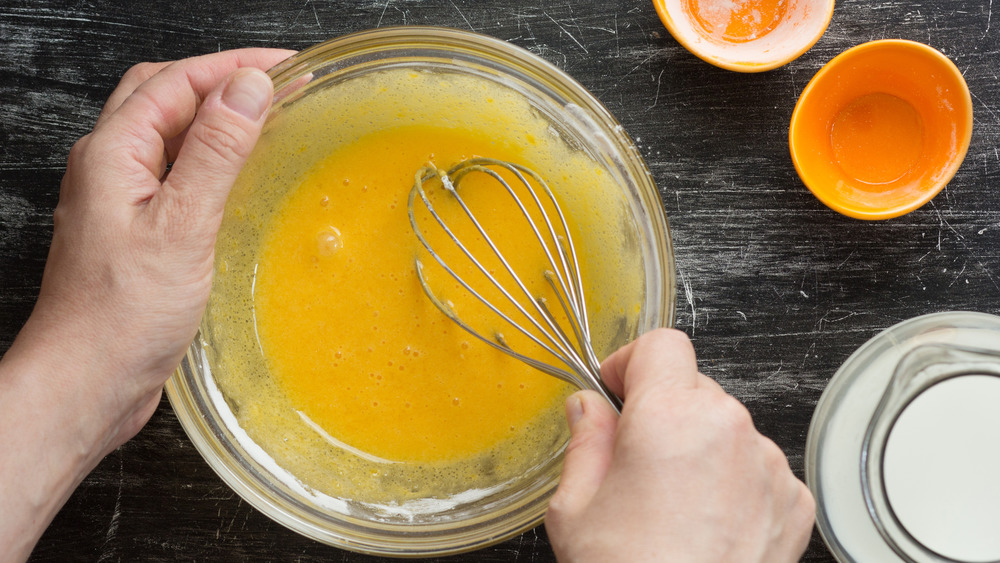The Egg Cooking Technique You Might Want To Master For Tiramisu
Tiramisu, a well-known Italian dessert, is also very technically complex. One look at a few recipes will tell you that—like this one from Sally's Baking Addiction. But despite the devil-in-the-detail complexities, many chefs opt to add it as a dessert menu item, and it remains one of Italy's most popular desserts, according to Delallo.
Tiramisu is made by alternately layering espresso-dipped sponge cake-like ladyfingers and an egg yolk/mascarpone cheese mixture over one another, then topping it with cocoa powder for garnish. And while it may seem like a simple concept, the steps take time and the layering should be just right or it will look more like a mess than a masterpiece. But regardless of the look, the taste and texture are what really bring people in. Chef Matthew Accarrino told La Cucina Italiano that "the best bite... is when a ladyfinger oozes coffee into a spoonful of cream." Coffee-lovers. take note.
With a presentation so complex, it makes sense that a complex process would bring this dessert to life. So what exactly is the technique you need to master to do that?
Meet the bain-marie
As seen in the recipe, the mascarpone/egg yolk mixture comes together when the chef combines the two ingredients over heat (with the addition of some sugar). This technique, as noted by a board on ChefTalk, is not used in every single tiramisu recipe, some of which combine the yolk and cheese without ever bringing it near a heat source. So, which is correct (and safe, in case you're concerned about raw yolks)?
As a responder on ChefTalk notes, both techniques are technically safe and both can be used, a common option is to use a double boiler. The Chicago Tribune notes in a recipe for zabaglione (a creamy Italian egg custard that Delallo incorporates in its tiramisu layers) that this technique is basically what's called a "bain-marie" and can be done even by those without an actual double boiler by setting a heat-safe (stainless steel/glass) bowl over a pot with a bit of steaming water. Add your yolks, sugar, and cheese and carefully whisk. This avoids fully cooking the yolk when "the steam from the simmering water heats the bowl, which in turn slowly and gently heats what's in the bowl."
As long as you pay attention to the precision and give some attention to all the details, your dessert will have people coming back for seconds. And if you master the egg yolk technique (cooked or uncooked), this would be a stellar dessert to add to your date night rotation.

